
Björn Natthiko Lindeblad: I May Be Wrong ‘Oh, your poor brain’, says Mrs Gee, when she sees the stack of things I really must read; the list of tasks I give myself. Then she passed me this book. Now, you’ll rarely hardly ever never catch me reading anything from the ‘Self Help’ shelves, let alone the ‘Mind, Body & Spirit’ section, and after this I needn’t bother. This small book has given me all I need. The author was a successful young businessman until he realised, as some greyhounds will, that the hare they are chasing will forever be out of reach, and even when they reach it, it’ll actually only be a stuffed toy. So he gave it all up and became a Buddhist monk, living in a jungle in Thailand. After seventeen years he had another epiphany, left the order, and, after a period of depression, reinvented himself as a teacher of meditation and a motivational speaker. While reading this I discovered that I really needn’t pay any attention to those nagging thoughts telling me what I am doing wrong; that I should trust my own instincts more; to enjoy the moment; and to face life with equanimity. We can do nothing about the past, so there is no point in regret or bearing grudges. And, as that famous Buddhist Robert Burns once said, the best laid plans of mice and men gang aft agley, so it’s no point worrying if the plans you’ve made go rogue. The present moment is the only moment that’s real, so we should live in it, and appreciate it as it happens. When asked by a journalist what one thing he’d learned from a life of contemplation, the author said ‘I no longer believe my every thought’. In other words, I May Be Wrong. I think there is something in here for science, which, as you all both know, is what I spend a lot of time thinking about. Science is not about the accumulation of facts, but the quantification of doubt. Any scientific discovery is only ever provisional, so there’s no point hanging on too tightly to your pet theory, or being angry when another scientist shows that your line of inquiry might, in fact, be mistaken. Some scientists might feel better about life if they started off being humbler about the evidence. I think I have already begun to adopt some of Lindeblad’s tips, albeit without knowing it. I have done my best to avoid management. The quest for status is, to me, like chasing a hare that turns out to be fake. Who needs it? Who wants it? And what is actually the point of all those meetings? By avoiding all that clutter I have been able to enjoy my job more than, I suspect, most people enjoy theirs. Lindeblad loves to tell stories, and one comes from that great Buddhist teacher, Winnie-the-Pooh. While walking through the Hundred Aker Wood, Pooh and Piglet agree that their friend Rabbit is awfully clever. He has Brain. Maybe that’s why, says Pooh, he never understands anything. Perhaps, after all, there is another self-help book I should read – The Tao of Pooh.
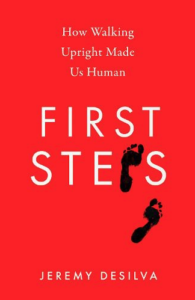 Jeremy DeSilva: First Steps I paused at the top of the stairs and bent down to pet the dog, who usually liked to sleep there. But I misjudged my balance, slipped down several steps, and came to a halt when my left foot slammed into the return wall. The resulting broken ankle left me almost completely helpless. It was only thanks to the ministrations of the vast panjandrum that is the National Health Service that I could get better. That, and the more proximate care of the unflagging Mrs Gee, who enjoyed the experience so much that she decided to retrain as a nurse (specialising in patients with learning disabilities — go figure). Even the dog said she was sorry. While in hospital I reflected that my next book would be called Bugger Bipedalism, and would look at why it is that we humans, almost uniquely among mammals, are habitual bipeds, when the habit is obviously, transparently and ridiculously maladaptive. Jeremy De Silva saved me the trouble, and shows that my bedridden state was not unique. The painful and expensive burden of fractures to bones from hip to toe; slipped discs; torn cruciate ligaments (and the many other ailments of knees); hernias; prolapses; plantar fasciitis; sciatica; death in childbirth, and many other ills are a direct consequence of our having rotated a structure that was meant to be horizontal through ninety degrees. The rewards, though, have been just about worth the effort. A short walk every day won’t help you lose weight, because human walking is an extraordinarily energy-efficient means of getting around. It might, however, reduce your risk of getting breast cancer, Alzheimer’s or heart disease and is known to alleviate low mood. Our top half, relieved from the burden of walking, can do more things — notably, to be able to control breathing sufficiently well that our ancestors could invent spoken language. And the utter helplessness of one who breaks a leg may have prompted the evolution of a compassionate side to human nature. The fossil record of human walking is thin, but just big enough to show that some of our bipedal, pre-human cousins recovered from otherwise debilitating fractures, rather than being left on the savannah to be eaten by a passing leopard. The ministrations of Mrs Gee have a long history and might have been what made us human.
Jeremy DeSilva: First Steps I paused at the top of the stairs and bent down to pet the dog, who usually liked to sleep there. But I misjudged my balance, slipped down several steps, and came to a halt when my left foot slammed into the return wall. The resulting broken ankle left me almost completely helpless. It was only thanks to the ministrations of the vast panjandrum that is the National Health Service that I could get better. That, and the more proximate care of the unflagging Mrs Gee, who enjoyed the experience so much that she decided to retrain as a nurse (specialising in patients with learning disabilities — go figure). Even the dog said she was sorry. While in hospital I reflected that my next book would be called Bugger Bipedalism, and would look at why it is that we humans, almost uniquely among mammals, are habitual bipeds, when the habit is obviously, transparently and ridiculously maladaptive. Jeremy De Silva saved me the trouble, and shows that my bedridden state was not unique. The painful and expensive burden of fractures to bones from hip to toe; slipped discs; torn cruciate ligaments (and the many other ailments of knees); hernias; prolapses; plantar fasciitis; sciatica; death in childbirth, and many other ills are a direct consequence of our having rotated a structure that was meant to be horizontal through ninety degrees. The rewards, though, have been just about worth the effort. A short walk every day won’t help you lose weight, because human walking is an extraordinarily energy-efficient means of getting around. It might, however, reduce your risk of getting breast cancer, Alzheimer’s or heart disease and is known to alleviate low mood. Our top half, relieved from the burden of walking, can do more things — notably, to be able to control breathing sufficiently well that our ancestors could invent spoken language. And the utter helplessness of one who breaks a leg may have prompted the evolution of a compassionate side to human nature. The fossil record of human walking is thin, but just big enough to show that some of our bipedal, pre-human cousins recovered from otherwise debilitating fractures, rather than being left on the savannah to be eaten by a passing leopard. The ministrations of Mrs Gee have a long history and might have been what made us human.
 Chris D. Thomas: Inheritors of the Earth The Monterey Pine is endangered. A goldilocks species that’s picky about where it lives, it clings forlornly to a few clifftops in California. As if to add insult to injury, it is deserted by the iconic Monarch butterflies, which seem to prefer the introduced Australian blue gum trees next door. Strenuous efforts are being made to conserve this picturesque pine. But hold – what’s this? – the Monterey pine, like the blue gum, has also been introduced, though in the opposite direction, to the Antipodes. It likes the climate of New Zealand so well that it thrives there, to the extent that it’s become a key part of the local timber industry. This scenario – one of many described in a book that critics whose coin is words such as ‘catastrophe’, ‘extinction’, ’emergency’ and ‘disaster’ can only describe as ‘provocative’ – shows that there are two sides to extinction. For sure, the impact of human beings on the Earth’s climate and ecosystems is serious; the effects, undeniable. But this is not the much-touted ‘Sixth Mass Extinction’ (at least, not yet), and among the less well-publicised effects of human disturbance is the creation – by introduction, geographic separation and hybridisation – of a whole host of new species, at an unprecedented rate. When human beings are gone, they will leave more species in their wake than they inherited. Just not the same ones. This is somewhat embarrassing for conservationists, whose attitude is that the world should be kept in just the way they found it, as if the world they inherited was primeval and changeless but for the arrival of humans (a highly invasive species native to Africa and the result of the hybridisation of at least three different species). Introduced and invasive species are seen as ‘bad’, ‘unnatural’, and fit for extirpation. Such a view is to privilege one moment in time above all others, when the world is in fact always changing, and there is nothing special about any moment above any other. The modish view of conservationists, which, to my mind, is crystallised in the erection of the ‘Anthropocene’, a term that means the geological period in which we all now live, defined by the effects of humans on the environment; a term that reflects a colossal, somewhat patronising and narcissistic hubris, when the remains of human activity in tens of millions of years might be barely detectable, if at all, and leaving aside the practical issue of whether one can create a geological period when one is still living in it. But evolution is ceaselessly active, and human beings are as much a part of nature as the Monterey pine. Species have always come and gone, sometimes slowly, sometimes quickly, and at the same time have crossed continents and hopped between islands. The task for conservationists is, perhaps, to have some humility before the evidence, and, like King Canute was forced to do in the end, go with the flow. Species at risk of extinction should be saved. Of course they should. But perhaps they could be saved not by fruitlessly maintaining them where they happen to be found, but by moving them to places they might find more congenial, particularly in times of rapidly changing climate. The Monterey pine is a case in point. It was saved not by removing invasive species from its last holdouts in California, but by moving it somewhere else. The endangered species becomes — paradoxically — a successful invader.
Chris D. Thomas: Inheritors of the Earth The Monterey Pine is endangered. A goldilocks species that’s picky about where it lives, it clings forlornly to a few clifftops in California. As if to add insult to injury, it is deserted by the iconic Monarch butterflies, which seem to prefer the introduced Australian blue gum trees next door. Strenuous efforts are being made to conserve this picturesque pine. But hold – what’s this? – the Monterey pine, like the blue gum, has also been introduced, though in the opposite direction, to the Antipodes. It likes the climate of New Zealand so well that it thrives there, to the extent that it’s become a key part of the local timber industry. This scenario – one of many described in a book that critics whose coin is words such as ‘catastrophe’, ‘extinction’, ’emergency’ and ‘disaster’ can only describe as ‘provocative’ – shows that there are two sides to extinction. For sure, the impact of human beings on the Earth’s climate and ecosystems is serious; the effects, undeniable. But this is not the much-touted ‘Sixth Mass Extinction’ (at least, not yet), and among the less well-publicised effects of human disturbance is the creation – by introduction, geographic separation and hybridisation – of a whole host of new species, at an unprecedented rate. When human beings are gone, they will leave more species in their wake than they inherited. Just not the same ones. This is somewhat embarrassing for conservationists, whose attitude is that the world should be kept in just the way they found it, as if the world they inherited was primeval and changeless but for the arrival of humans (a highly invasive species native to Africa and the result of the hybridisation of at least three different species). Introduced and invasive species are seen as ‘bad’, ‘unnatural’, and fit for extirpation. Such a view is to privilege one moment in time above all others, when the world is in fact always changing, and there is nothing special about any moment above any other. The modish view of conservationists, which, to my mind, is crystallised in the erection of the ‘Anthropocene’, a term that means the geological period in which we all now live, defined by the effects of humans on the environment; a term that reflects a colossal, somewhat patronising and narcissistic hubris, when the remains of human activity in tens of millions of years might be barely detectable, if at all, and leaving aside the practical issue of whether one can create a geological period when one is still living in it. But evolution is ceaselessly active, and human beings are as much a part of nature as the Monterey pine. Species have always come and gone, sometimes slowly, sometimes quickly, and at the same time have crossed continents and hopped between islands. The task for conservationists is, perhaps, to have some humility before the evidence, and, like King Canute was forced to do in the end, go with the flow. Species at risk of extinction should be saved. Of course they should. But perhaps they could be saved not by fruitlessly maintaining them where they happen to be found, but by moving them to places they might find more congenial, particularly in times of rapidly changing climate. The Monterey pine is a case in point. It was saved not by removing invasive species from its last holdouts in California, but by moving it somewhere else. The endangered species becomes — paradoxically — a successful invader.
 Johannes Krause and Thomas Trappe: A Short History of Humanity. You’ll both be aware that I’ve been reading quite a few horses’-mouth accounts of the latest work in understanding human evolution. See for example my review of Jeremy DeSilva’s First Steps above, and my reviews of Tom Higham’s The World Before Us from March, and Kyle Harper’s Plagues Upon The Earth from February. Here’s another, from Johannes Krause, who, like Svante Pääbo (author of Neanderthal Man) works at the Max Planck Institute for Evolutionary Anthropology in Leipzig. Krause’s story follows a similar course – a laboratory’s discoveries of the nature of human evolution, that modern humans contain fragments of DNA from other species, and so on — but concentrates on the past 10,000 years or so, and mainly deals with Europe. Immigration, it seems, has always been Europe’s story (a theme given a modern context by Krause’s coauthor Trappe, a political journalist who has also followed Krause’s work). There have, in essence, been three major waves of immigration into Europe over the past 10,000 years. The first, of hunter-gatherers, was replaced by a wave of farmers from Anatolia some 8,000 years ago, and this was mingled with a further wave, of equestrian pastoralists around 5,000 years ago. There is more to this, of course, and apart from a few outliers (a corner of Sardinia remains almost pure Anatolia), the people that call themselves European (and that includes Britons) is a mongrel breed, products of these three major waves of immigration, forever intermingled.
Johannes Krause and Thomas Trappe: A Short History of Humanity. You’ll both be aware that I’ve been reading quite a few horses’-mouth accounts of the latest work in understanding human evolution. See for example my review of Jeremy DeSilva’s First Steps above, and my reviews of Tom Higham’s The World Before Us from March, and Kyle Harper’s Plagues Upon The Earth from February. Here’s another, from Johannes Krause, who, like Svante Pääbo (author of Neanderthal Man) works at the Max Planck Institute for Evolutionary Anthropology in Leipzig. Krause’s story follows a similar course – a laboratory’s discoveries of the nature of human evolution, that modern humans contain fragments of DNA from other species, and so on — but concentrates on the past 10,000 years or so, and mainly deals with Europe. Immigration, it seems, has always been Europe’s story (a theme given a modern context by Krause’s coauthor Trappe, a political journalist who has also followed Krause’s work). There have, in essence, been three major waves of immigration into Europe over the past 10,000 years. The first, of hunter-gatherers, was replaced by a wave of farmers from Anatolia some 8,000 years ago, and this was mingled with a further wave, of equestrian pastoralists around 5,000 years ago. There is more to this, of course, and apart from a few outliers (a corner of Sardinia remains almost pure Anatolia), the people that call themselves European (and that includes Britons) is a mongrel breed, products of these three major waves of immigration, forever intermingled.
 Graeme Hall: All Dogs Great and Small My dogs’ favourite TV show is Dogs Behaving (Very) Badly, in which genial, tweed-waistcoat-and-cravat-wearing Yorkshireman Graeme Hall sorts out the problematic behaviour of dogs up and down the land. An abiding theme is that the problems are usually just as much those of the owners as those of the dogs. People fail to realise the acute sensitivity that dogs have to a person’s body language, and although they might not be able to understand the details of human conversations, dogs are very aware of tone of voice. Dogs, you see, have co-evolved with humans for 40,000 years. The two species are, to an extent, symbiotic, and resolving the problematic behaviour of a dog usually requires some re-training of the owner. When watching the show I have wondered (even if my dogs might not have done) how Graeme (we feel we’re on first-name terms with him, chez Gee) got to be where he is today. This book tells all. For more than 20 years Graeme was a senior executive in a food company, until his interest in dogs and dog training took over. The book follows the lives of dogs from milk-sossage to old age, backing up his assertions with the latest scientific evidence, and is as friendly yet as plain-speaking as you’d expect from the Land of the White Rose. And there are lots of rather droll anecdotes. It probably helps if you like dogs — even better if dogs share your home, as one house in three in Britain does — but in any case is a heart-warming read.
Graeme Hall: All Dogs Great and Small My dogs’ favourite TV show is Dogs Behaving (Very) Badly, in which genial, tweed-waistcoat-and-cravat-wearing Yorkshireman Graeme Hall sorts out the problematic behaviour of dogs up and down the land. An abiding theme is that the problems are usually just as much those of the owners as those of the dogs. People fail to realise the acute sensitivity that dogs have to a person’s body language, and although they might not be able to understand the details of human conversations, dogs are very aware of tone of voice. Dogs, you see, have co-evolved with humans for 40,000 years. The two species are, to an extent, symbiotic, and resolving the problematic behaviour of a dog usually requires some re-training of the owner. When watching the show I have wondered (even if my dogs might not have done) how Graeme (we feel we’re on first-name terms with him, chez Gee) got to be where he is today. This book tells all. For more than 20 years Graeme was a senior executive in a food company, until his interest in dogs and dog training took over. The book follows the lives of dogs from milk-sossage to old age, backing up his assertions with the latest scientific evidence, and is as friendly yet as plain-speaking as you’d expect from the Land of the White Rose. And there are lots of rather droll anecdotes. It probably helps if you like dogs — even better if dogs share your home, as one house in three in Britain does — but in any case is a heart-warming read.
 C. J. Cherryh: Hellburner The accomplished and award-winning Hard-SF writer C.J. Cherryh (the second ‘h’ is silent, as in ‘in Hertford, Hereford and Hampshire, Hurricanes ‘Ardly Happen’) writes novels in a believable future history in which humanity has begun to colonise nearby star systems. I read one of these, Downbelow Station, a long time ago, but remember rather little about it. The action of Hellburner is set in the 24th Century when the Earth is at war with the Union, a group of humans long used to colonising outer space. By ‘believable’, action and adventure are repeatedly waylaid by the frustrations of political intrigue, and the very real — and well-portrayed — misunderstandings and prejudices that might result from culture clashes between a complex society based on a planetary surface and a much simpler one based entirely in space. The plot centres on a program by Earth to fly Hellburners — human-piloted spacecraft that fly at sizeable fractions of the speed of light, and the challenges that this will pose for a human crew. Automation is shunned, as this is the strategy likely adopted by the Union, so Earth-based AI stratagems will be second-guessed by the enemy. Such problems are repeatedly discussed in great detail: one is as likely to find oneself in a congressional hearing as a space battle. The title promised me the latter — but I got was the former, and it’s a hard read. As someone once said on viewing Star Wars I: The Phantom Menace, the Trade Federation is a poor substitute for Han Solo. To be fair, Hellburner is a sequel to another novel, Heavy Time, and meant to be read as such — but Wikipedia is great at supplying plot summaries, so I didn’t feel left out. The language has a density which, frankly, takes no prisoners. Here is an example:
C. J. Cherryh: Hellburner The accomplished and award-winning Hard-SF writer C.J. Cherryh (the second ‘h’ is silent, as in ‘in Hertford, Hereford and Hampshire, Hurricanes ‘Ardly Happen’) writes novels in a believable future history in which humanity has begun to colonise nearby star systems. I read one of these, Downbelow Station, a long time ago, but remember rather little about it. The action of Hellburner is set in the 24th Century when the Earth is at war with the Union, a group of humans long used to colonising outer space. By ‘believable’, action and adventure are repeatedly waylaid by the frustrations of political intrigue, and the very real — and well-portrayed — misunderstandings and prejudices that might result from culture clashes between a complex society based on a planetary surface and a much simpler one based entirely in space. The plot centres on a program by Earth to fly Hellburners — human-piloted spacecraft that fly at sizeable fractions of the speed of light, and the challenges that this will pose for a human crew. Automation is shunned, as this is the strategy likely adopted by the Union, so Earth-based AI stratagems will be second-guessed by the enemy. Such problems are repeatedly discussed in great detail: one is as likely to find oneself in a congressional hearing as a space battle. The title promised me the latter — but I got was the former, and it’s a hard read. As someone once said on viewing Star Wars I: The Phantom Menace, the Trade Federation is a poor substitute for Han Solo. To be fair, Hellburner is a sequel to another novel, Heavy Time, and meant to be read as such — but Wikipedia is great at supplying plot summaries, so I didn’t feel left out. The language has a density which, frankly, takes no prisoners. Here is an example:
Carrier was outputting now, making EM noise in a wavefront an enemy would eventually intercept in increasing Doppler effect, and to confuse their longscan they were going to pull a pulse, half up to FTL and abort the bubble, on a heading for the intercept zone — that was the scary part. That was the time, all sims aside, that the theoretical high v became real, .332 light, true hellride, with herself for the com-node that integrated the whole picture.
I can appreciate the artistry that went into this, but it made my head ache. Oh, and for some reason, some of the spacers speak a kind of Franglais. Et pourquoi pas?
 A. E. Moorat: Queen Victoria, Demon Hunter This is one of those burlesques in the subgenre in which historical or well-known but fictional figures are pitted against
A. E. Moorat: Queen Victoria, Demon Hunter This is one of those burlesques in the subgenre in which historical or well-known but fictional figures are pitted against olives the forces of darkness (qv. Abraham Lincoln, Vampire Hunter; Pride, Prejudice and Zombies, and Albert Einstein, Defender against Nameless Horrors from Other Dimensions). The story is very much the true story of the early part of the reign of Queen Victoria, from her accession, through her marriage to Prince Albert, up to and including the births of her first two children. In other words, very much the same arc as a recent televisual emission in which Jenna Coleman played the young Queen. But that’s not the whole story. Behind the throne is a secret organisation, the Protektorate, sworn to defend Victoria from hideous forces that will rise up from the Pit, usurp the crown, and take over the greatest empire in the world. The story is remarkably good; the action, incredibly gory; and – without spoiling the plot — Victoria is no slouch at decapitating a zombie or two. Perhaps it’s no coincidence that Jenna Coleman was once an all-action companion to Dr Who.
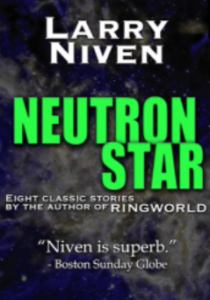 Larry Niven: Neutron Star The ‘Golden Age’ of science fiction arguably began in the 1930s with John W. Campbell‘s editorship of the pulp magazine Astounding Science Fiction from 1937 until the ‘New Wave’ of SF of the 1960s introduced such affectations as literary sensibility and social conscience. Golden-Age SF stories tended to be ‘hard’ SF (that is, with a strong science component) and concentrated on pace and plot rather than character or literary pretension. If so, Larry Niven’s story Neutron Star (published in Worlds of If in October, 1966) was among the Golden Age’s last gasps. Or, rather, a last hurrah, for the story won awards and is rightly hailed as a classic. In the story, the protagonist Beowulf Shaeffer, ever-impecunious space-pilot-for-hire, is paid by the financially shrewd, technically advanced but pathologically risk-averse Puppeteers to take one of their spaceships on a hyperbolic orbit that will take it within a mile of a neutron star. The story describes the intense tidal forces that such a mission would experience — and all this just a year before neutron stars were actually discovered. The other stories in this collection share the same imagined universe, and several feature Beowulf Shaeffer, the Puppeteers and other aliens including the recklessly warlike Kzint and the strange, plant-like Outsiders. All the stories are painted in the bright primary colours of pulp SF, and yet each is a meticulously crafted example of the storyteller’s art, ending in a satisfying plot twist. After Hellburner, Neutron Star was nothing short of refreshing. Ah, the Good Old Days, when men were real men, women were real women, and small blue creatures from Alpha Centauri were real small blue creatures from Alpha Centauri.
Larry Niven: Neutron Star The ‘Golden Age’ of science fiction arguably began in the 1930s with John W. Campbell‘s editorship of the pulp magazine Astounding Science Fiction from 1937 until the ‘New Wave’ of SF of the 1960s introduced such affectations as literary sensibility and social conscience. Golden-Age SF stories tended to be ‘hard’ SF (that is, with a strong science component) and concentrated on pace and plot rather than character or literary pretension. If so, Larry Niven’s story Neutron Star (published in Worlds of If in October, 1966) was among the Golden Age’s last gasps. Or, rather, a last hurrah, for the story won awards and is rightly hailed as a classic. In the story, the protagonist Beowulf Shaeffer, ever-impecunious space-pilot-for-hire, is paid by the financially shrewd, technically advanced but pathologically risk-averse Puppeteers to take one of their spaceships on a hyperbolic orbit that will take it within a mile of a neutron star. The story describes the intense tidal forces that such a mission would experience — and all this just a year before neutron stars were actually discovered. The other stories in this collection share the same imagined universe, and several feature Beowulf Shaeffer, the Puppeteers and other aliens including the recklessly warlike Kzint and the strange, plant-like Outsiders. All the stories are painted in the bright primary colours of pulp SF, and yet each is a meticulously crafted example of the storyteller’s art, ending in a satisfying plot twist. After Hellburner, Neutron Star was nothing short of refreshing. Ah, the Good Old Days, when men were real men, women were real women, and small blue creatures from Alpha Centauri were real small blue creatures from Alpha Centauri.
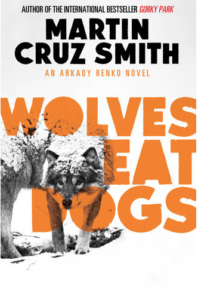 Martin Cruz Smith: Wolves East Dogs Arkady Renko, dogged Moscow detective (introduced in Smith’s 1981 novel Gorky Park), tries in vain to wrest any kind of order from the collapse of the Soviet Union and the rise of the ‘New Russia’, which is every bit as corrupt as the old. Here he investigates the case of millionaire Pasha Ivanov, who has — apparently — thrown himself to his death from his penthouse apartment. This seems out of character for the cheerful, outgoing Ivanov, whose apartment walls are decorated with pictures of himself with notable figures of the day. ‘He embraced Yeltsin and Clinton and the senior Bush. He beamed at Putin, who, as usual, seemed to suck on a sour tooth’. But Ivanov has been acting out of character of late. And the floor of his walk-in closet is covered in — of all things — salt. Renko’s trail leads nowhere. And more than nowhere, for he finds himself chasing leads in the radioactive exclusion zone around the wreck of the Chernobyl nuclear plant, a region inhabited by a bored militia, desperate scientists, shady scavengers and the peasants who refused to leave after one of the reactors blew up in 1986. Renko finds a kind of respite here, perhaps because he has no formal jurisdiction in Ukraine, even enjoying the rustic hospitality of the peasant farmers. ‘Arkady found the pickles crisp and sour, with perhaps a hint of strontium’. The plot is, eventually resolved, although perhaps rather too quickly and neatly after a series of unlikely coincidences. But a satisfying read nonetheless. Especially at the moment.
Martin Cruz Smith: Wolves East Dogs Arkady Renko, dogged Moscow detective (introduced in Smith’s 1981 novel Gorky Park), tries in vain to wrest any kind of order from the collapse of the Soviet Union and the rise of the ‘New Russia’, which is every bit as corrupt as the old. Here he investigates the case of millionaire Pasha Ivanov, who has — apparently — thrown himself to his death from his penthouse apartment. This seems out of character for the cheerful, outgoing Ivanov, whose apartment walls are decorated with pictures of himself with notable figures of the day. ‘He embraced Yeltsin and Clinton and the senior Bush. He beamed at Putin, who, as usual, seemed to suck on a sour tooth’. But Ivanov has been acting out of character of late. And the floor of his walk-in closet is covered in — of all things — salt. Renko’s trail leads nowhere. And more than nowhere, for he finds himself chasing leads in the radioactive exclusion zone around the wreck of the Chernobyl nuclear plant, a region inhabited by a bored militia, desperate scientists, shady scavengers and the peasants who refused to leave after one of the reactors blew up in 1986. Renko finds a kind of respite here, perhaps because he has no formal jurisdiction in Ukraine, even enjoying the rustic hospitality of the peasant farmers. ‘Arkady found the pickles crisp and sour, with perhaps a hint of strontium’. The plot is, eventually resolved, although perhaps rather too quickly and neatly after a series of unlikely coincidences. But a satisfying read nonetheless. Especially at the moment.
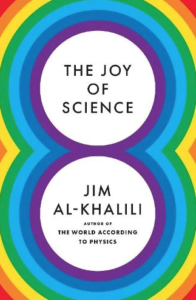 Jim Al-Khalili: The Joy of Science When Winnie-the-Pooh was Stuck in a Tight Place, his friends helped him pass the time by reading him Improving Books. I’d imagine that The Joy of Science might have been on this list. In a volume that is both Small and Tiny, celebrity physicist Jim Al-Khalili, presenter of Radio 4’s The Life Scientific, presents eight bite-sized lessons in how thinking more scientifically will improve your life. It’s certainly helpful to have clear explanations of such things as Cognitive Dissonance, Confirmation Bias, why it is that Otherwise Perfectly Sensible People believe that 5G Masts cause COVID while still being able to put One Foot In Front Of The Other without Falling Over, notwithstanding inasmuch as which What Christopher Robin Does in the Mornings, but there is not, to be fair, very much Joy. Alice, having noted that there are vanishingly few pictures and absolutely no conversation, would have strayed and disappeared down some conspiracy-theoretic rabbit hole. It’s all so very Earnest, you see, and some might say Patronising, though it tries oh so very hard not to be. As Mozart remarked on the Improving qualities of opera in the magic lantern version of Peter Shaffer’s Amadeus, these gods and heroes are so worthy you’d think they shit marble. And who’d really rather not have a chat with their hairdresser than Hercules?
Jim Al-Khalili: The Joy of Science When Winnie-the-Pooh was Stuck in a Tight Place, his friends helped him pass the time by reading him Improving Books. I’d imagine that The Joy of Science might have been on this list. In a volume that is both Small and Tiny, celebrity physicist Jim Al-Khalili, presenter of Radio 4’s The Life Scientific, presents eight bite-sized lessons in how thinking more scientifically will improve your life. It’s certainly helpful to have clear explanations of such things as Cognitive Dissonance, Confirmation Bias, why it is that Otherwise Perfectly Sensible People believe that 5G Masts cause COVID while still being able to put One Foot In Front Of The Other without Falling Over, notwithstanding inasmuch as which What Christopher Robin Does in the Mornings, but there is not, to be fair, very much Joy. Alice, having noted that there are vanishingly few pictures and absolutely no conversation, would have strayed and disappeared down some conspiracy-theoretic rabbit hole. It’s all so very Earnest, you see, and some might say Patronising, though it tries oh so very hard not to be. As Mozart remarked on the Improving qualities of opera in the magic lantern version of Peter Shaffer’s Amadeus, these gods and heroes are so worthy you’d think they shit marble. And who’d really rather not have a chat with their hairdresser than Hercules?
 Greetings, Pop Pickers. Music fans of a certain vintage will recall with a wry smile the tune Hocus Pocus by the Dutch prog rock band Focus, in which the inspired lunacy of organist, vocalist and flautist Thijs van Leer met the guitar virtuosity of Jan Akkerman. Always willing to try something new, and having no shame whatsoever, my current musical project G&T has done a cover version. It’ll be released for download on Apple Music, iTunes and so on and so forth on 27 May, but those of a less patient nature can pre-save it on Spotify and Apple Music now. Adrian Thomas played guitar, more guitar, extra guitar, additional guitar, further guitar, with a side-order of guitar and a guitar jus. I did other stuff, and mixed it here at Flabbey Road. If you are impatient to hear more from G&T (and why not?) our album Ice & A Slice is widely available. And we’re currently recording some new material for release sometime in the future. Watch, as they say, this space. Not ‘arf!
Greetings, Pop Pickers. Music fans of a certain vintage will recall with a wry smile the tune Hocus Pocus by the Dutch prog rock band Focus, in which the inspired lunacy of organist, vocalist and flautist Thijs van Leer met the guitar virtuosity of Jan Akkerman. Always willing to try something new, and having no shame whatsoever, my current musical project G&T has done a cover version. It’ll be released for download on Apple Music, iTunes and so on and so forth on 27 May, but those of a less patient nature can pre-save it on Spotify and Apple Music now. Adrian Thomas played guitar, more guitar, extra guitar, additional guitar, further guitar, with a side-order of guitar and a guitar jus. I did other stuff, and mixed it here at Flabbey Road. If you are impatient to hear more from G&T (and why not?) our album Ice & A Slice is widely available. And we’re currently recording some new material for release sometime in the future. Watch, as they say, this space. Not ‘arf!


 Jeremy DeSilva:
Jeremy DeSilva: 
 Johannes Krause and Thomas Trappe:
Johannes Krause and Thomas Trappe:  Graeme Hall:
Graeme Hall:  C. J. Cherryh:
C. J. Cherryh:  A. E. Moorat:
A. E. Moorat:  Larry Niven:
Larry Niven:  Martin Cruz Smith:
Martin Cruz Smith:  Jim Al-Khalili:
Jim Al-Khalili: 






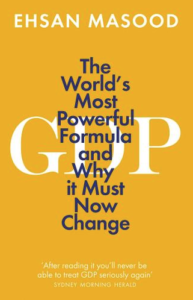 Ehsan Masood:
Ehsan Masood:  Bob Shaw:
Bob Shaw:  Max Adams:
Max Adams:  Tom Higham:
Tom Higham:  Max Adams:
Max Adams: 
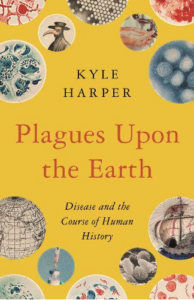 Kyle Harper:
Kyle Harper: 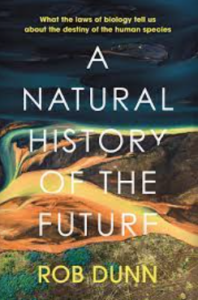 Rob Dunn:
Rob Dunn:  William Gibson:
William Gibson:  J. R. R. Tolkien (ed. Carl Hostetter) –
J. R. R. Tolkien (ed. Carl Hostetter) –  J. R. R. Tolkien (ed. Christoper Tolkien) –
J. R. R. Tolkien (ed. Christoper Tolkien) – 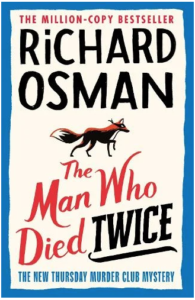 Richard Osman –
Richard Osman –  Francesca Stavrakopoulou –
Francesca Stavrakopoulou –  Ehsan Masood:
Ehsan Masood: